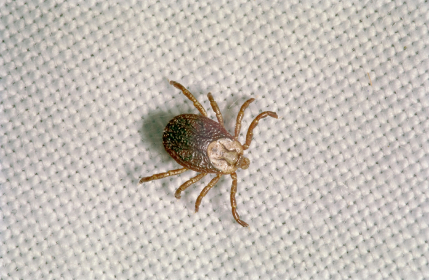Drills, Hammers, and Strangers, Oh My! Keeping Pets Safe During Remodeling

Summer and fall in our valley are prime times for construction projects, but with all the maintenance required for our mountain homes, other times of year are likely filled with drilling, concrete mixing, or hammering. Although these projects are necessary, they pose a particular safety risk for pets, not to mention the aural assault on pet’s sensitive hearing. As you don your hard hat, Felton Veterinary Hospital gives some tips for how to keep pets safe during remodeling.
Continue…Skin Cancer in Pets

Your pets may enjoy their time in the sun as much as you do this summer. And although they may love basking in the warm rays, skin cancer is a risk for pets just as it is for humans. According to the American Kennel Club (AKC), skin cancer is the most common type of cancer diagnosed in dogs. Cats, too, are often affected by skin cancer, especially cats with short hair, light-colored coats, and lots of sun exposure. Regular annual wellness visits with your veterinarian are essential, including a complete nose-to-tail physical exam and looking for signs of skin cancer. Your pet’s veterinarian can detect skin cancer at these visits, but it’s also essential for pet owners to understand and recognize signs of pet skin cancer, especially as pets age.
Continue…It’s Crystal Clear: Dehydration and Water for Pets

Balanced nutrition is vital for pet health and can prevent a whole host of health problems. Water is also a critical component of a healthy pet and is the main component of healthy cells. Without adequate water, your pet can become dehydrated and lose vital body organ function.
We know that providing drinking water daily to our pets is essential, but what else should we be aware of? With a bit of preparation and awareness, you can ensure your pet drinks enough water and prevent dehydration in your pet. July is National Pet Hydration Month, so Felton Veterinary Hospital thought it would be an excellent time to explore the importance of water for pets.
Continue…How to Prevent Lyme Disease In Pets

You may be hearing more about Lyme disease recently, and for good reason. Current estimates from the CDC show that 300,000 to 400,000 people in the US are diagnosed or treated for Lyme disease yearly. The disease affects humans and animals and, if left untreated, can result in painful complications.
Lyme disease is a bacterial infection transmitted by the bite of an infected tick. The bacterium Borrelia burgdorferi is responsible for Lyme disease, which has become the most common vector-borne disease in the United States.
With spring rains, moist air, and tall, green grass, now is the time to prevent this debilitating disease’s spread to your pets. Felton Veterinary Hospital shares a few tips for how to keep your best friend safe.
Continue…Diabetes in Pets

It’s pet diabetes month, and what better way to focus on this common issue in cats and dogs than with help from your Felton Veterinary Hospital team? When we think about diabetes, our pets may not be at the top of our minds, but this debilitating disease is rising in both people and pets alike. According to Banfield Pet Hospital’s 2016 State of Pet Health Report, diabetes in dogs increased by nearly 80 percent from 2006 to 2015.
Diabetes is more common in middle-aged and older pets, but any pet can be affected. In addition, the disease commonly leads to other conditions, such as heart, kidney, and liver disease and cataracts. So pet owners must be aware of the risks and signs of diabetes in pets and how to prevent this disease from affecting their beloved pet.
The good news is that with early detection, you and your veterinarian can successfully manage the disease through diet, exercise, regular monitoring, and treatment. With mindful interventions, pets with diabetes can still live healthy, long lives.
Continue…Announcing Our Best Pet Care Blogs of 2021

The pets we share our lives with are pretty predictable (despite the great unpredictability of the past few years!). Just like us, they like certain things to happen at particular moments of the day, week, or month. Creatures, as it were, of habit.
At Felton Veterinary Hospital, we like to respond to pet patterns with monthly blog posts. These blogs are intended to shed some light on both new and familiar pet topics. We care what our community of pet owners are interested in when it comes to their pets, so we pay attention to which blogs resonate the most with our clients. As we ring in 2022, we take a second look at Felton Veterinary Hospital’s most popular blogs of 2021. Continue…
Bringing Home A New Puppy: 9 Tips to Prep Your House

Bringing home a new puppy is an exciting time, but can also be stressful if you’re not prepared. From puppy-proofing your house to starting potty training the right way, it’s easy to become overwhelmed with your responsibilities in order to make your puppy’s transition a success.
With all the excitement and anticipation around welcoming your puppy home, it’s easy to forget important steps. But, preparing your home and your family for your new arrival can put you on track and ensure a happy dog for years to come. We’ve asked experts across the country, from Orlando, FL to Portland, OR, to share their best tip for bringing home a puppy.
Continue…The Rain Brings out the Ticks

Ticks are found in abundance in the San Lorenzo Valley. They are most prevalent in early spring and fall but are well adapted to live throughout the year. Ticks live in grassy areas or in brush and dark, moist areas where they wait for a host to walk by. They then crawl onto your pet and bite, attaching for up to several days while they feed.
Following bouts of rain, ticks may be out and about in greater numbers. A tick can only quest up on vegetation for hosts when the humidity is high enough for them to absorb sufficient water from the air.
– Larisa Vredevoe, Ph.D., professor of biological sciences, Cal Poly San Luis Obispo
Continue…Chigger Season is Here -What You Need to Know

If you’ve ever taken a walk with your dog in the woods or through a field, only to have your best friend scratching up a storm for the next several days, she might have experienced a chigger attack.
In cats, chiggers are most commonly found around the ears and between the toes, but can be found almost anywhere on the body. Because of intense itching caused by these mites , your cat may chew or scratch itself, causing self-inflicted wounds. The resulting skin lesions vary from crusted spots to areas of hair loss to raw moist bleeding areas.
These tiny orange – red mites (also known as Harvest mites) reside in grass and underbrush during September through January in the Santa Cruz Mountains. They are so small that you might not even notice them on your dog or cat but, once they become a source of itchy discomfort, they’re difficult to ignore.
Continue…When It Rains it Spores

The Santa Cruz Mountains are home to more than 1,000 mushroom species.
The recent rainstorms have triggered many types of mushroom caps to emerge from their underground stems.
During the winter months, it’s important to keep your yard clear of mushrooms & to keep a close watch on your dogs when they are roaming in areas where they may be exposed to mushrooms.
Continue…

 Schedule an Appointment
Schedule an Appointment
